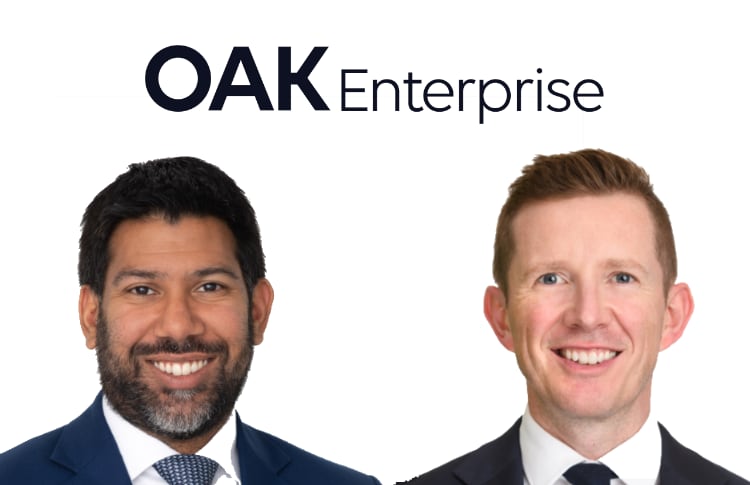
Swiss Re has highlighted the capital efficiency that a modern and layered risk transfer architecture brings to the property and casualty insurance market, seeing the capital markets and investors as now key elements in a chain that is supporting growing volumes of global risks.In a new sigma report released today in Monte Carlo, global reinsurance giant Swiss Re has brought focus onto the multi-layered, multi-structured and multi-capital-source market that insurance and reinsurance has evolved into, seeing it as increasingly effective.In general the reinsurer is positive on this, citing the efficiency and cost-benefits for participants in the chain, as well as growing use of alternative capital sources and alternative risk transfer techniques.As a result, the sigma report highlights that the global property and casualty insurance and reinsurance market now has “increased efficiency, capacity and resilience.” P&C insurance premiums are projected to grow globally in line with GDP over the next decade, having doubled in size over the past 20 years to USD 2.4 trillion, Swiss Re expects, with natural catastrophe losses and asset accumulation, economic and litigation claims inflation pressures all seen as drivers.
At the same time there has been a maturation of the marketplace, with smaller players, outsourced underwriting and capital light models, as well as new ways to transfer risk and new capital to support it.Alternative risk transfer, such as captives and risk pools are supporting insurance expansion, as too are strong reinsurance players, Swiss Re says.While the disaggregation of the market chain is helping re/insurers tap into specialist skills and scale.
But so too is the alternative capital being leveraged along the market chain and this is becoming increasingly important and therefore a feature that has introduced some dependencies as well, Swiss Re believes.“Two decades of innovation resulted in broader access to coverage through a blend of conventional and alternative structures than 20 years ago,” Swiss Re’s new sigma report explains.“A growing number of smaller, specialised players drive efficiency gains, while robust reinsurers and alternative risk solutions help improve capacity in view of a riskier world.” Jérôme Jean Haegeli, Swiss Re’s Global Chief Economist, explained, “The rapid expansion of the P&C market is not only about scale, but also about greater capability and resilience.
Insurers have become more efficient at pricing, managing and transforming risk, supporting capacity even in times of heightened uncertainty.“At the same time, insurers are passing on a larger share of the risk to reinsurers.This is a recognition of the demand for risk transfer and a trend that is set to continue given the risk landscape.
“A key pillar for reinsurers to fulfil their indispensable role as a shock absorber is a strong capital base.Robust reinsurance and alternative risk solutions are further broadening capacity and helping keep protection accessible and affordable in an increasingly uncertain world.” Gianfranco Lot, Swiss Re’s Chief Underwriting Officer P&C Reinsurance, added, “The growth of the P&C insurance market is testament to its ability to navigate a complex risk landscape.Looking ahead, the adoption of AI in underwriting could steer the industry towards data-rich global insurers versus nimbler specialists.
This shift is accompanied by a structural trend of transferring more risk to reinsurers, who remain a pillar of stability and an enabler of transformation.” Reinsurance premiums have been growing faster than primary P&C, Swiss Re notes, which is due to more risk moving up the chain, Swiss Re says, which we would suggest also indicates how risk can move along the chain with less friction than before.But the reinsurer cautions, “This layered architecture of risk transfer – from capital-light originators to reinsurers to alternative-capital-backed retrocession – has enhanced capital efficiency and market resilience but also introduced new dependencies on capital markets and investor sentiment.” The company explains that, “Risk modeling, across domains such as natural catastrophes, motor, liability and cyber, is a key driver of making the disaggregated model work.Advances in risk modeling facilitate the valuation, packaging and wholesale transfer of risk from capital-light originators to full-stack insurers and reinsurers.
The growth and consolidation of wholesale brokers complement this trend.” Adding that, “Whether the recent growth of smaller players proves a lasting shift or a cyclical effect of hard markets will depend on pricing conditions, wholesale appetite and regulatory tolerance for capital-light models.” But there are clear positives to the introduction of the dependence on capital markets and investors, as the growth of insurance-linked securities (ILS) and the important disaster risk financing it supplies has shown.Swiss Re said, “Property outpaced every other sub-line as exposures grew faster than GDP and mandatory natural catastrophe schemes proliferated, yet cat bond and reinsurance inflows prevented capacity crunches.” Swiss Re expects that increasing amounts of risk will be originated and flow along the market chain to upper-layer sources of reinsurance and retrocessional capital, including the capital markets, driven by premium growth and the increasingly fluid market structure.“We see more risk transferring to reinsurance and retrocession in future.
Reinsurance premiums grew by 7% CAGR over the past decade, faster than primary P&C.Retrocession volumes grew by about 8 to 10% CAGR, as issuance of insurance linked securities (ILS) doubled since 2013.Higher-risk lines of business such as property and US liability with higher cession rates are growing faster than low-risk lines.
The diffusion of risk carriers also implies faster growth of smaller insurers, which tend to have higher cession rates,” Swiss Re’s new sigma explains.“The free flow of capital and retrocession is essential for efficient global diversification of large and interconnected risks.“The future insurability and affordability of risk transfer relies upon how efficiently all actors can manage distributed value chains, and harness capital markets to match risk capital with growing and evolving global risks.” Alternative capital is now a “defining feature” of the market structure, Swiss Re says.
Explaining, “The layering of risk transfer—from originators to insurers to reinsurers to capital market structures—is broadening market capacity, improves capital efficiency, and reinforces the central role of reinsurance and alternative capital in sustaining insurability in a riskier world.“The extensive innovation at the front end of the value chain must be complemented by capacity for tail risks at the back end.” While this is all very positive for supporting insurance growth and premium expansion globally, as the capital markets and efficient risk transfer and improving market structure help capital flow to risk more readily, Swiss Re does caution on dependencies that are introduced.The reinsurance firm highlights capital markets and investor dependencies that now exist in the global insurance market, that perhaps did not in the same way a few decades ago.
The reinsurer highlights market liquidity and investor sentiment as the two main dependencies introduced by alternative capital and the ILS market.This is of course something that has been evident in the past, as we have seen times in the catastrophe bond and ILS market’s history where broader capital market issues have affected the cost-of-capital, while investor sentiment has been dampened by the reinsurance market’s lack of discipline through the mid-2010’s.But, if capital is treated as a valued partner, properly informed of the risks it is assuming, while discipline is maintained and traditional re/insurers leverage the capital markets and investor appetites for the clear efficiency benefits they offer, then this broad alignment can help to negate the effect of future market issues and avoid damaging sentiment as well.
What is clear now, is that cultivating and respectfully managing the relationship with capital can only benefit the global insurance and reinsurance industry, helping it to do more with less and enabling it to live up to the lofty goal of truly narrowing the protection gaps that exist..All of our Artemis Live insurance-linked securities (ILS), catastrophe bonds and reinsurance can be accessed online.Our can be subscribed to using the typical podcast services providers, including Apple, Google, Spotify and more.
Publisher: Artemis








